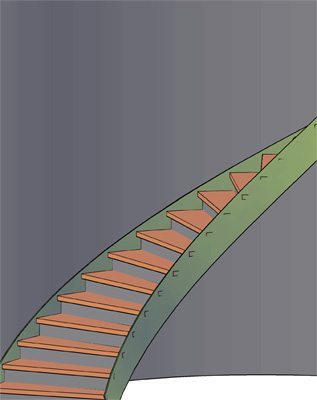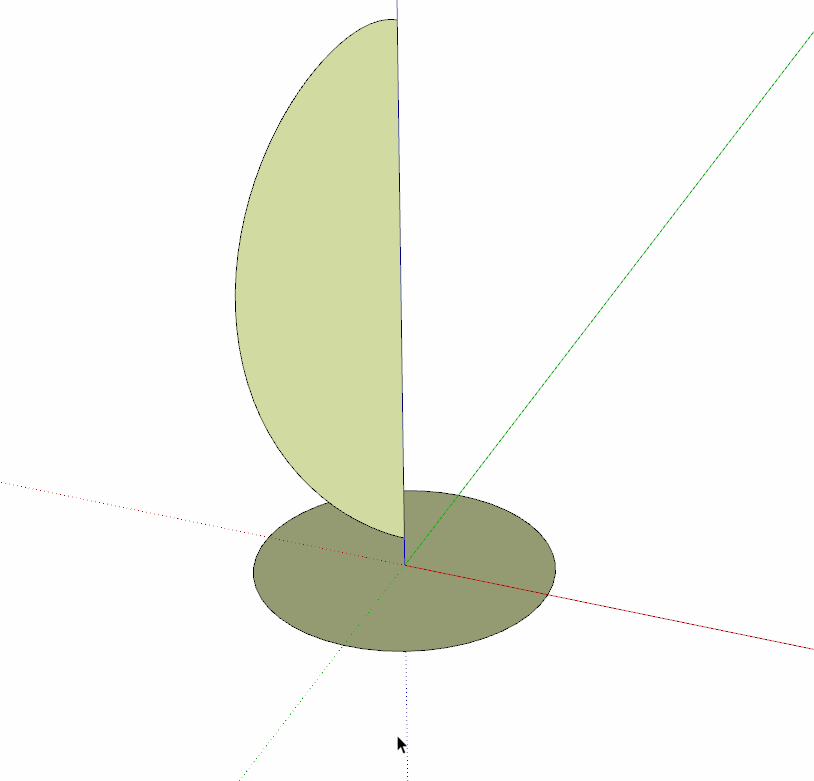

- Sketchup fill curved space how to#
- Sketchup fill curved space pdf#
- Sketchup fill curved space manual#
- Sketchup fill curved space full#
Hide the layer while you continue work on the current layer.Ĥ.

For later use, select the fill and duplicate it, and drag the duplicate to a new layer above the current layer. Repeat the step to create a large fill for your area.ģ. To create a fill of a material large enough to fill your space with realistic proportions, duplicate the image, then mirror it to match up the image tone. Import a wood, metal or other texture photo from your photo library or browser.Ģ.
Sketchup fill curved space manual#
For this tutorial, select Manual mode for your layer sorting.ġ. Make sure your imported image layer remains at the top of your layer stack. Only the wireframe of your sketch will show, allowing you to add materials and color below the line work.ģ.
Sketchup fill curved space pdf#
This imports the PDF with a transparent background instead of a white background. As you import the PDF into Concepts, tap the alpha iconon the left end of the Selection menu. Once you complete your desired interior design, rotate the image to your desired angle and select PDF as your file format.Ģ.

Sketchup fill curved space how to#
Learn how to create a transparent PNG in Concepts. To build your own image library of transparent PNGs, collect photos and save them in your image library, Files, or objects library in Concepts as described above in Osama's interview. Concepts' abilities to turn a traditional PDF into a transparent PDF, to import objects with transparent backgrounds, and to easily skew images with the control points make it simple to render any design.įor this tutorial, we will primarily use images to render the design sketch.
Sketchup fill curved space full#
The flexibility of using PDF files along with real material photos makes it very easy and quick to create a full render in Concepts. The sketch in this video was created in SketchUp, a popular 3D modeling app used by architects, but it is possible to create a similar interior sketch entirely in Concepts using the methods shown in the previous video, From Floor Plan to Axonometric View. Mirror a copy of a curve or surface with continuity.In this video, we will use a combination of imported photos and brushes to render an interior design sketch. Other methodsĬreate a surface based on gray-scale color values in an image file.ĭuplicate each mesh face with a NURBS surface. Create a surface from other surfacesĬreate planar surfaces through objects at specified locations.Ĭreate a surface through the intersections of objects and points projected toward the construction plane.Ĭopy a surface specified varying distances from the original surface.įlatten (develop) a surface or polysurface with curvature in one direction to a planar surface. Offset a curve and create a ruled surface between the curves.įit a surface through profile curves and one edge curve.įit a surface through profile curves and two edge curves. Revolve a profile curve around an axis and along a rail curve.Ĭreate a surface by revolving a profile curve around an axis. Create a surface from curvesĭrive closed planar curves in a straight line.Ĭreate a surface from two, three, or four curves.Įxtrude a curve on a surface in the surface normal direction.įit a surface through profile curves that define the surface shape.įit a surface through a network of crossing curves.įit a surface through curves and point objects.Ĭreate a planar surface from planar curves. Create a surface from pointsįit a rectangular planar surface through points.ĭraw a surface from a grid of points that represent surface control points.ĭraw a surface from three or four corner points.ĭraw a surface from a grid of points that lie on the surface. An open cylinder is closed in one direction.Ī torus (donut shape) is closed in two directions.ĭraw a rectangular planar surface with a bitmap texture. If a surface does not have a rectangular shape, either it has been trimmed or the control points on the edges have been moved.Ī surface can be open or closed. The place where the edges come together is called the seam. Rhino has many tools for constructing surfaces directly or from existing curves.Īll NURBS surfaces have an inherently rectangular organization.Įven a closed surface such as a cylinder is like a rectangular piece of paper that has been rolled up so two opposite edges are touching. The NURBS form can represent simple shapes, such as planes and cylinders, as well as free-form, sculptured surfaces.Īll surface creation commands in Rhino result in the same object: a NURBS surface. Create surfaces | Rhino 3-D modeling Create surfacesĪ surface is like a rectangular stretchy rubber sheet.


 0 kommentar(er)
0 kommentar(er)
